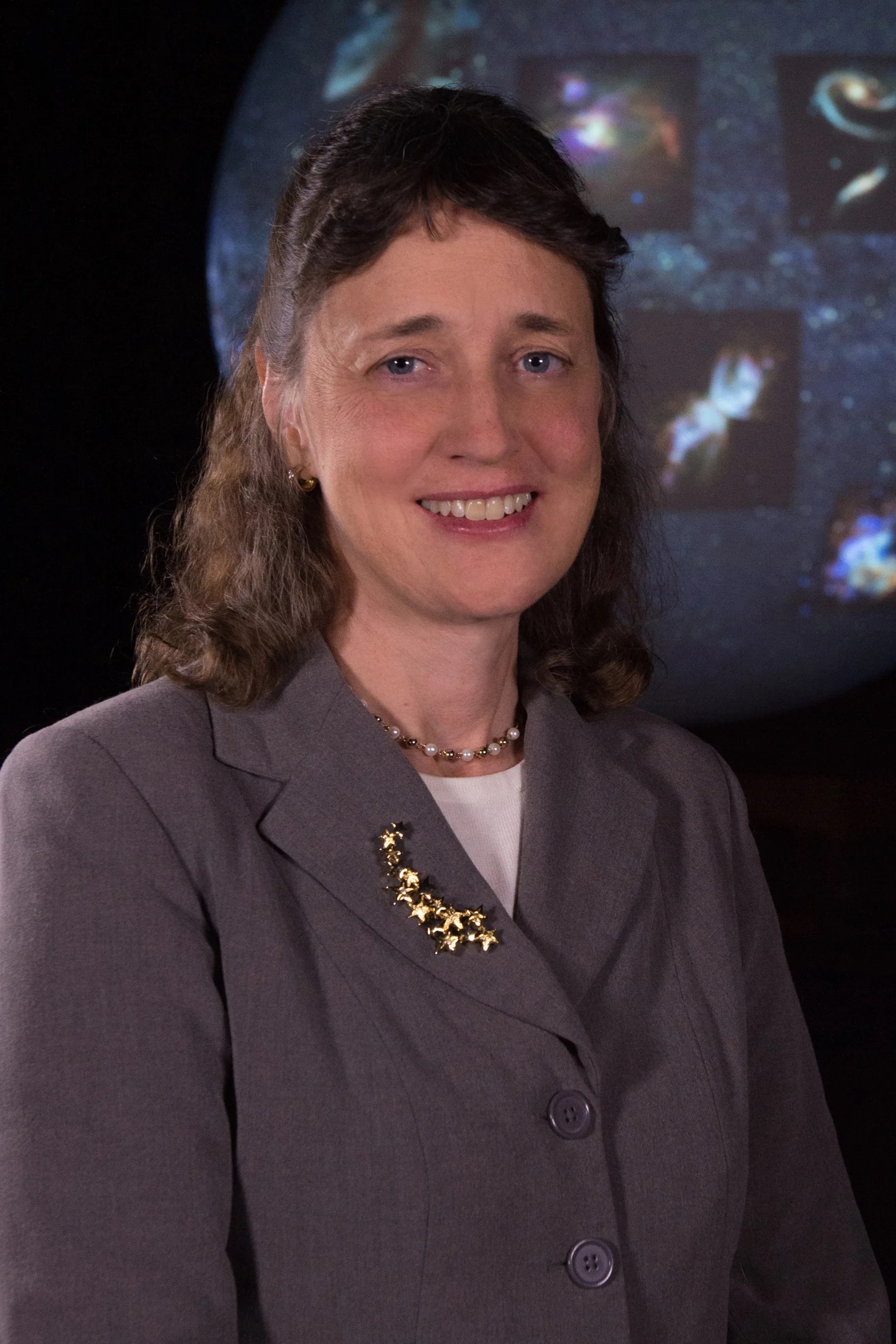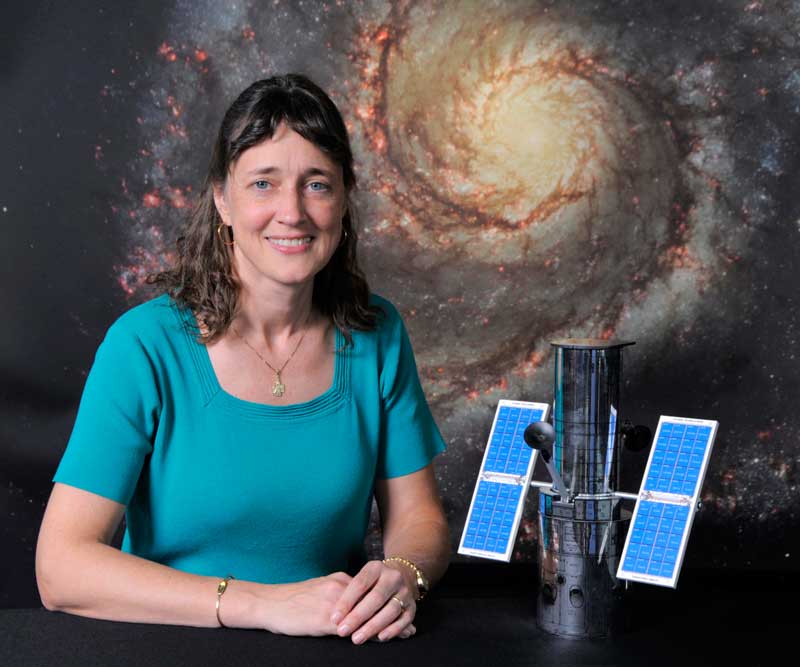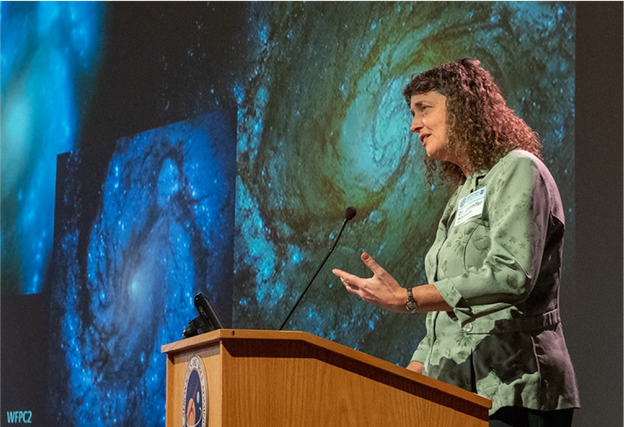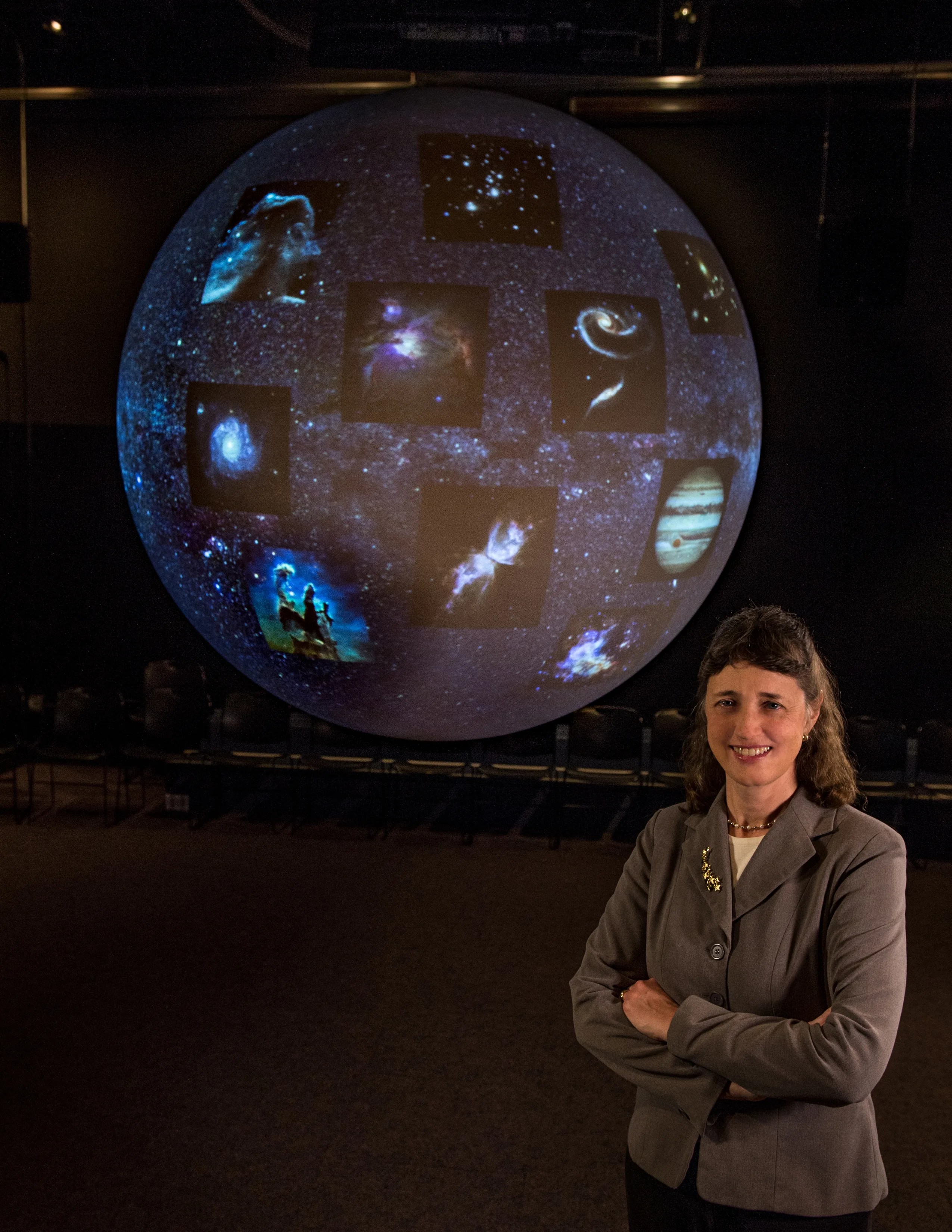
Dr. Jennifer J. Wiseman
Senior Project Scientist | NASA's Goddard Space Flight Center
Tumbling through our solar system is a chunk of ice that bears Jennifer Wiseman’s name, the result of a field trip to give students a taste of astronomy work that got a bit more real than anyone expected.
The two-week field trip to Lowell Observatory in Arizona brought college students together with mentors to experience what astronomers actually do. Jennifer was given the task of studying photographic plates, pictures of the night sky taken with the telescope, to search for asteroids. She would look at two images taken at different times and search for changes that indicated an object had moved. Stars stayed in place, but an asteroid would change in position over the course of a few hours or a few days.
Comparing the images, or exposures, Jennifer found an object that was moving quickly over the field of stars. But it wasn’t a random asteroid — it was an undiscovered comet.
After the comet was confirmed via telescope in the following days, it was named after Jennifer and astronomer Brian Skiff, who captured the images. Some comets pass by and are gone forever, but Comet 114P/Wiseman-Skiff turned out to be a periodic comet, one that returns again and again to the inner solar system.
Studying it made the perfect senior thesis project.

“It taught me to take advantage of opportunities like internships or a special opportunity, like in this case, to visit an observatory, because unexpected things can happen,” Jennifer recalled. “Try things that are interesting and opportunities will open up, even if you can’t see them ahead of time.”
As a senior astrophysicist at Goddard Space Flight Center in Maryland and the senior project scientist for the Hubble Space Telescope, Jennifer's primary responsibility is to ensure that the Hubble mission is as scientifically productive as possible.
“This means I have the privilege of working with world-class scientists around the globe who are using the Hubble Space Telescope to study everything from planets in our solar system to the most distant galaxies, and finding new discoveries even more than 28 years after Hubble’s launch.”
The role includes making sure the telescope is used in the wisest way to get the best possible science, and working with people who orchestrate items like Hubble’s management, budgets, and policies for its use.
“I’m still involved in research but I enjoy the big picture. In a science oversight role you get to really be in touch with a broad range of astronomy — not only my own research field, which is star formation in our galaxy — but also working with scientists who work in many other fields, such as studying the planets in our own solar system or even those studying cosmology: the structure, origins, and future of our universe. It’s fascinating to be able to learn about this broad range of astronomy and many different aspects of our universe.”

Growing up in the Ozark Mountains of rural Arkansas, Jennifer became interested in astronomy as a teenager. “I grew up on a farm in the country, and I enjoyed exploring fields and streams and meadows and forests, and really enjoyed everything about the natural world,” she said. “I also enjoyed looking up at the night sky, because where we lived there were no nearby city lights to drown out the night sky, and I could see lots of stars. It made me curious about space.”
At the time, she was also fascinated by the first images being sent back by the Voyager probe as it passed the planets of the solar system. “It was sending back pictures of the moons of Jupiter and Saturn — really intriguing alien worlds — and I decided I really wanted to be a part of this space exploration enterprise. I wasn’t sure what role or how to do that. I was just interested in exploration.”
Supportive teachers, family and community members encouraged Jennifer to explore careers that interested her, so she arrived at the Massachusetts Institute of Technology in Cambridge, Massachusetts, excited to study something related to science or space exploration. “But I wasn’t sure whether I wanted to be an engineer who helps build the kinds of probes that go off and explore the solar system, or an astronomer studying the physics of how the universe works, or to try to even be an astronaut,” she said. “All these ideas were in my head, but I didn’t know how to pursue any of these fields.”
Jennifer plunged into internships on human spaceflight and planetary science to sample some of those fields, in addition to taking as many science and math courses as she could. Her astronomy courses made her realize she was interested in deep space, “farther than any astronaut or probe could go.” And the only way to explore deep space was with telescopes.
Only a limited number of astronomy courses were available to her as an undergraduate, so after obtaining a bachelor’s degree in physics, Jennifer earned her doctoral degree in astronomy at Harvard University, learning how to conduct astronomical research and use different types of telescopes. She used radio telescopes, including the Very Large Array in New Mexico to study dense clouds of gas and dust where stars form, such as the Orion Nebula — which she focused on for her doctoral research.
After graduating, she continued her research on how stars form at the National Radio Astronomy Observatory and the Johns Hopkins University before starting her career at NASA in 2003. She served at NASA Headquarters as the program scientist for several astrophysics missions, including Hubble, then became the head of the Laboratory for Exoplanets and Stellar Astrophysics at NASA’s Goddard Space Flight Center. She was later named the Senior Project Scientist for the Hubble Space Telescope mission.

Jennifer’s work with the Hubble mission and her research in star formation are part of her interest in a broader question: how science is prioritized and supported by society. Before she joined NASA she served as a Congressional Science Fellow for the American Physical Society, helping Congressional staff as they considered scientific input on issues and decisions involving space, science, and societal values. She was able to set up congressional hearings on NASA’s science priorities and how different federal agencies monitor the sky for near-Earth asteroids.
“I learned through that experience how important it is to be able to discuss technical and scientific issues in a way that’s useful for society leaders who are not scientists but are interested in understanding scientific discoveries,” she said. “I think it's important that people understand what the big questions are that are driving scientific research, and why the answers are interesting and exciting and relevant to people in other walks of life.”
Jennifer loves to bring that kind of perspective to the public, sharing the excitement of scientific discovery in talks, interviews and more. And part of that is letting students know that NASA has a role for those who are interested. “We need people with lots of different kinds of talents and interests in space exploration,” she said. “Astronomers, physicists, engineers, writers, teachers, administrators, managers, computer scientists — many pieces fit together to make astronomy and space exploration projects work. We need a community of talent and enthusiasm.”
